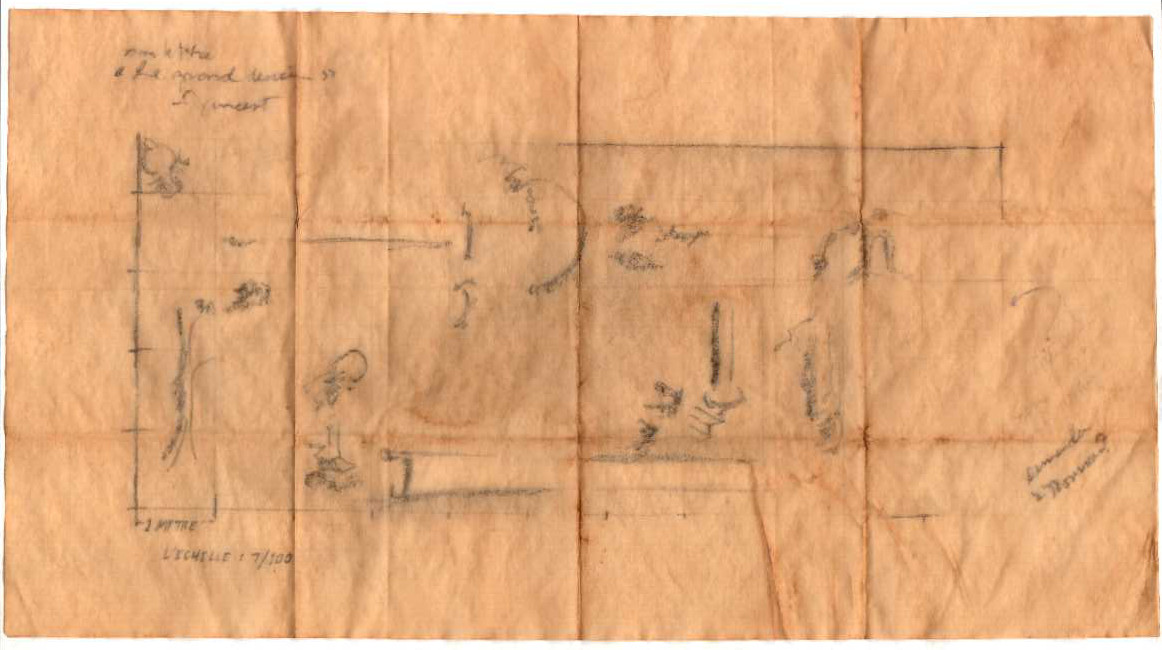“Drawings done with the intention of later expanding them into full-sized frescoes were called cartoons; Artimus believed that the fragile, discolored sheet which he held in his hands was just such a document. More, he believed that the Rousseau and Vincent alluded to in the scribblings on the reverse side of the vellum were in fact the landscape artist Theodore Rousseau, and the mad master Expressionist, Vincent van Gogh. The cartoon itself, he believed, had been drawn by a contemporary of Rousseau’s, Jean-François Millet, and consequently became known, if somewhat inaccurately, as The Millet Fresco.”
— James A. Owen, The Barbizon Diaries, p. 4
The image above is a scan of my own rendition of the fresco sketch, or cartoon, from the description in the Prologue of The Barbizon Diaries.
The cartoon’s scale shows a fresco 15 feet high by 36 feet wide. I wanted to impress the size and proportion on my mind so, were I to pass by it, I might recognize a surface that could take a painting so large. A quick outline on graph paper was enough. But I couldn’t pass up the opportunity to recreate an artifact.
I didn’t have any charcoal handy. Instead, I used a blunt 9B graphite pencil with indiscriminate smudges. I imagined only hints of a scene that Millet and company might have come up with. The vellum I aged the old-fashioned way: with coffee. Some campaigners soak their ancient maps and documents in black tea to get the look of antiquity. I prefer the richer tones of arabica.
Owen, James A., The Barbizon Diaries: A Meditation on Will, Purpose, and the Value Of Stories (The Meditations Book 2). Coppervale Press, 2016.
